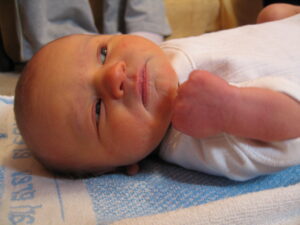SHARE WITH FRIENDS:
Physiological jaundice in infants (Neonatal jaundice)
Yellowing of the skin and mucous membranes due to high levels of bilirubin in the blood.
In infants, the process of conversion of fetal hemoglobin to mature hemoglobin takes place. In this case, the liver does not have time to bind bilirubin, which is formed from fetal hemoglobin.
Additional symptoms are high drowsiness and decreased appetite.
Jaundice on the skin is most noticeable on days 3-4 of a baby’s life, and jaundice persists for 7-8 days.
When the enzyme system in the baby's body is fully functional, the skin color remains light pink.
This condition is physiological - treatment is not necessary.
Normally, physiological jaundice should pass by the 14th day of a child’s life. If the jaundice does not disappear by this time, the child should be taken to a pediatrician.
